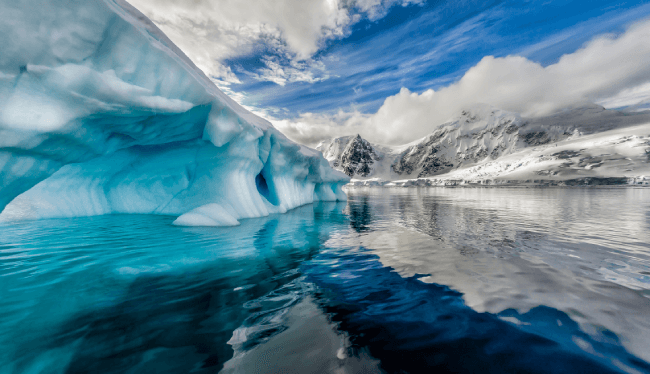How AI and IoT are Helping Scientists Overcome Climate Modeling Challenges
Environment | 23-02-2023 | By Robin Mitchell
Researchers used AI and IoT technologies to remotely monitor moss growth in the harsh Antarctic environment. By using LoRaWAN for long-range transmission and AIoT, the system gathered critical data such as temperature and humidity without overwhelming data processing. This breakthrough showcases the potential of combining AI and IoT to improve microclimate models and aid in climate change research. What challenges does climate modelling present, what did the researchers do, and how does this demonstrate the power of AI and IoT?
What challenges does climate modelling present?
In the field of climate science, creating accurate models of the climate and identifying evidence supporting the theory of climate change presents scientists with numerous challenges. While there is plenty of evidence showing that global temperatures and CO2 levels have continued to rise since the Industrial Revolution, creating models that accurately link sea levels, atmospheric composition, and global CO2 emissions together is difficult due to the extreme complexity of the earth’s climate, and the incredibly intricate interactions between different environmental factors.
For example, rises in CO2 can increase temperatures, but historically, temperatures have risen before CO2 levels. Thus, believing that CO2 doesn’t contribute to temperature rise would be understandable. However, on closer inspection, it turns out that rising CO2 levels can increase global temperatures, and the reason why CO2 has lagged temperature rise is due to a positive feedback effect whereby a slight increase in temperature results in additional CO2 release from oceans, and this, in turn, increases the temperature.
To create accurate climate models, researchers need as much data as they can possibly get their hands on, and this data needs to include everything from global temperatures to local air pollutants and wind speeds. However, having access to large amounts of data can also be a double-edged sword, as finding relevant data patterns can be extremely difficult.
Finally, getting data from remote locations, such as the Artic (which are extremely important for understanding natural environments and how climate change affects them), is unbelievably challenging when considering that local internet access is often unavailable, sensors need to be able to operate for extended periods, and there will be few people (if any at all), able to actively monitor sensor installations.
Antarctic researchers leverage AI and IoT for climate monitoring of moss
Recognising the need for better climate monitoring in remote locations, a team of Antarctic researchers recently combined AI and IoT technologies to create wireless devices capable of remotely monitoring moss. According to the researchers, moss is the “forest of the Antarctic”, playing a critical ecosystem role in sub-zero conditions.
Just like how trees provide a rich ecosystem for wildlife, moss provides a thriving ecosystem for small life forms, including bacteria, tardigrades, and fungi, by helping to insulate permafrost layers in ice-free areas of the Antarctic. At the same time, moss helps to reduce CO2 from the atmosphere, making moss a vital CO2 sink. As such, monitoring the state of Antarctic moss can help researchers understand how climate change is affecting both the biodiversity of the Antarctic and the environment in general.
However, monitoring moss so far away from society introduces several challenges, including data gathering, processing, and transmission. Thus, the researchers have turned to AI and IoT for data processing while utilising LoRaWAN for long-range transmission.
The low bandwidth nature of LoRaWAN means that not all gathered data from sensors can be transmitted, so localised AI and edge computing allow monitoring devices to make decisions on what should be sent. The system, called Artificial Intelligence of Things (AIoT), enables researchers to gather the most relevant data, including temperature, humidity, and images, without needing to process massive amounts of data, thereby helping researchers create better microclimate models.

An iceberg floats in Andord Bay on Graham Land, Antarctica
How does this demonstrate the power of AI and IoT?
Just about any IoT device can be designed to stream massive amounts of data in real-time for some remote server to process, but while this may have been acceptable in the past, the increasing amount of data being gathered makes this an impracticality. Using AI to pre-process data, determine what is relevant, and selectively send that data will not only help to improve future IoT services but the internet as a whole. This device model will also help to encourage the installation of larger device networks, as existing internet infrastructure will be under less pressure.
In the case of the researchers, using AI to filter out the most critical data helps to create more accurate models. However, AI is only as good as the model it’s trained from, meaning that any mistakes or assumptions made by the AI will ripple into research models created from the data filtered and processed by the AI.

